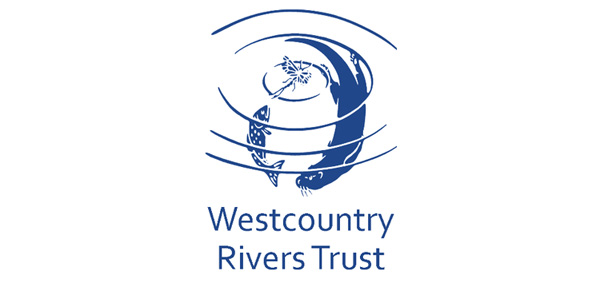Leading a collaborative approach to river conservation
The Westcountry Rivers Trust is safeguarding fragile river environments in the South West of England, by helping large groups of stakeholders to reach consensus about river usage and conservation. It uses Esri’s ArcGIS Online and data from the national umbrella body, The Rivers Trust, to clarify the ecological impacts of human activity on rivers and prioritise schemes to improve water quality and biodiversity.
Improved understanding of environmental challenges among diverse groups
More effective and collaborative decision making about conservation priorities
Targeted conservation projects that address urgent environmental issues
The Challenge
Rivers in the South West of England flow hundreds of miles, crossing county borders and traversing land owned or managed by as many as 2,000 stakeholders, ranging from local authorities and utilities, to water sports operators and farmers. These organisations, groups and individuals have a shared responsibility to work together to protect their nearby river environments for wildlife and future generations, but can often have widely differing points of view.
Like other rivers trusts throughout the UK, the not-for-profit organisation Westcountry Rivers Trust works with large groups of such stakeholders as part of a catchment-based approach to managing river courses in its region. It aims to facilitate open communication and gain agreement from all groups involved to pave the way for river conservation schemes. “Everyone has their own language for talking about rivers,” observes Sarah Wigley, Data and Evidence Officer for Westcountry Rivers Trust. “Commercial organisations, government bodies and community groups all use different terminology and have very different priorities for river use. Our challenge is to find a way to help everyone understand each other’s needs and to see the bigger picture.”
Interactive, digital maps give people from varied backgrounds a common language for collaboration and communication
Sarah Wigley – Data and Evidence Officer, Westcountry Rivers Trust
The Solution
In 2013, the national, umbrella organisation, The Rivers Trust, was assigned by Defra the role of supporting river catchment partnerships across the country (as part of the Catchment-Based Approach initiative). Part of this role was to encourage the use of data and evidence in river catchment management. Since then, The Rivers Trust has gathered and published a wide range of datasets using Esri’s cloud-based ArcGIS Online platform, including information on river flooding, commercial activity, biodiversity, water quality, land character and soil typology. All this data is attributed with river catchment boundary information, so it is easy for catchment partnerships nationwide to use. This online data portal is a valuable resource and has already promoted the use of ArcGIS Online amongst many local partnerships.
The Westcountry Rivers Trust uses Esri’s ArcGIS Online and the data from The Rivers Trust to analyse issues of particular environmental concern, comprehend river ecosystems and present the information clearly to river catchment partners. It uses interactive, digital maps during workshops and meetings, and produces high quality maps for reports to help multiple stakeholders, from any background, better understand and appreciate key issues. The trust is also beginning to use ArcGIS Online to create persuasive Story Maps that help to highlight issues and explain conservation projects in a highly visual and engaging format.
Over time, ArcGIS Online will play a key role in helping river catchment partnerships to improve river quality and biodiversity
Sarah Wigley – Data and Evidence Officer, Westcountry Rivers Trust
Benefits
Clearer communication of environmental issues
The Westcountry Rivers Trust has been able to significantly improve the effectiveness of catchment-based partnerships in the South West by using ArcGIS Online to present complex information, exceptionally clearly, on maps. Groups and individuals, who may not previously have realised that their commercial, agricultural or leisure activities were having an impact on water quality or biodiversity, can now better understand the environmental consequences. As Wigley says, “ArcGIS can open peoples’ eyes to the broader issues.”
More collaborative, multi-party decision making
Critically, the use of ArcGIS Online helps all of the diverse organisations and individuals involved in catchment-based partnerships to reach collective agreement. “Interactive, digital maps give people from varied backgrounds a common language for collaboration and communication,” Wigley says. “It’s an effective way to bring people together, at the same level, to understand different points of view and work together to make decisions.”
Implement more targeted conservation projects
By using ArcGIS to analyse data on river catchment areas more systematically, the Westcountry Rivers Trust is now able to easily identify issues of concern and can better prioritise conservation projects. In Cornwall, for example, the Westcountry Rivers Trust was able to use ArcGIS to identify declining fish populations and instigate a project to remove barriers at strategic sites along two key rivers to improve access to up-stream breeding areas. “Over time, ArcGIS Online will play a key role in helping river catchment partnerships to improve river quality and biodiversity,” Wigley says.
Raised awareness of the need for river conservation
Finally, by creating Story Maps, the Westcountry Rivers Trust now has a new means of raising public awareness of river conservation issues and the impact of poor land practices alongside rivers. “Story Maps are a good way of presenting scientific data to members of the public in a way that they can easily understand,” Wigley says. “We plan to use Story Maps increasingly in the future to engage the wider community in river conservation programmes.”


